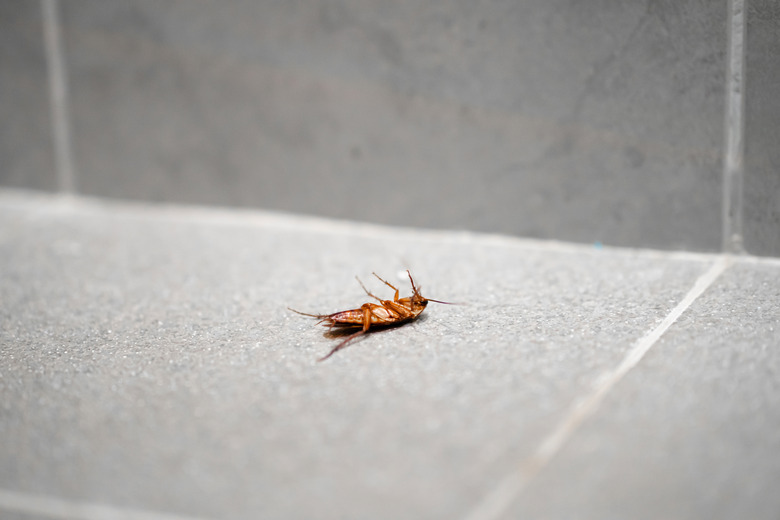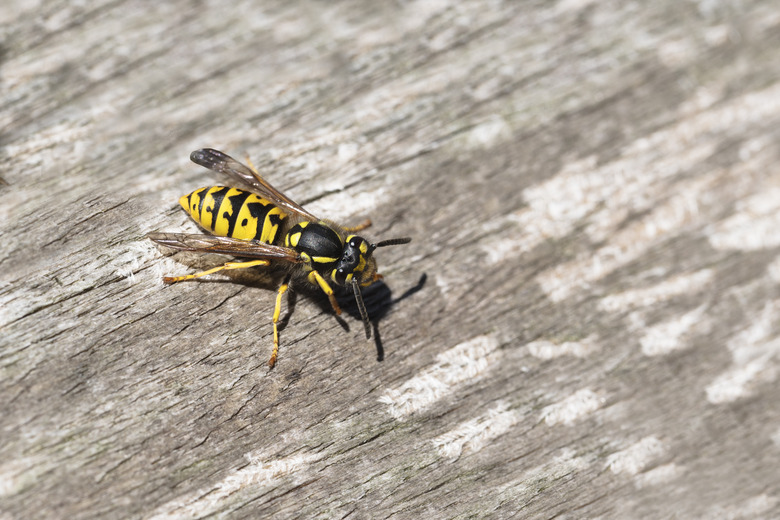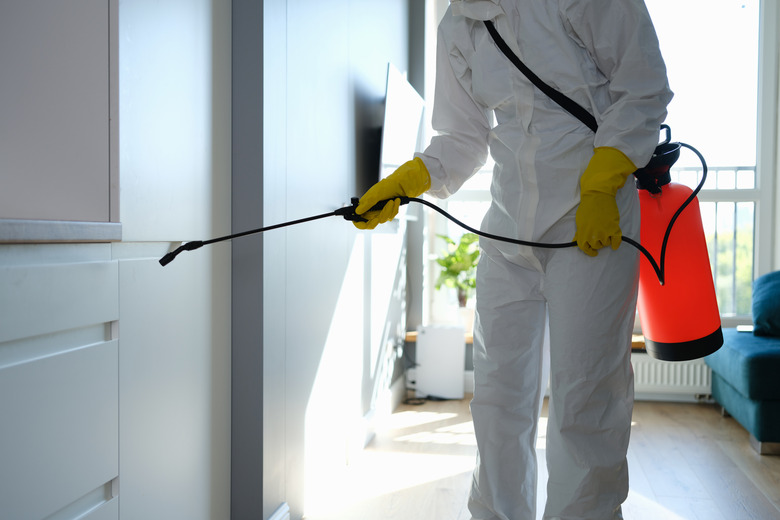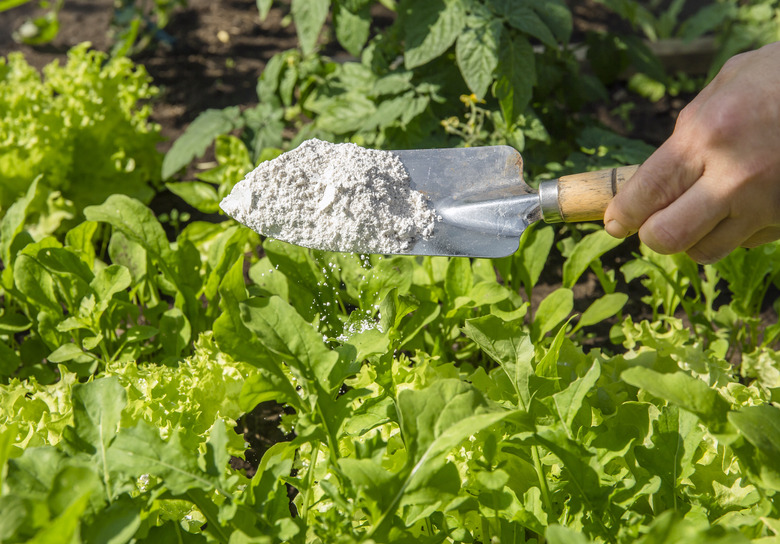A Homeowner's Guide To DIY Pest Control
We may receive a commission on purchases made from links.
When ants, fleas, moths, rodents, or any other creepy crawly pests invade the home, most homeowners prefer to try DIY pest control methods before calling in the pros. Although many do it yourself pest control methods are effective, some infestations — like those by termites and bed bugs — call for the heavy artillery only professional pest control companies can wield safely. But even before the exterminator arrives, there are plenty of home pest control options you can do to manage the situation.
DIY pest control starts outside on the ground and in the vegetation that insects have to traverse to reach the house. Besides focusing on keeping the house clean and dry, effective pest control solutions include sealing all the small openings through which insects can enter. DIY pest control also includes ways to reduce the population of pests that have already become established, and there are ways to do this without endangering the health of the people and pets who live there.
Prevention Methods
Prevention Methods
The number one pest management tip you'll hear from virtually every professional pest control expert is to keep your house clean and dry to prevent an infestation in the first place. All household pests need food and water, and while the diet of some, such as moths, includes the clothes in your closet or drawer, most others are interested in the same food that humans eat. And the need for water drives them into basements and corners of the house where condensation collects. Remove these attractants and most pests will go elsewhere, although some, like carpenter ants and termites, will still hang around because their main interest is the very wood from which your house is made.
If your house has a pest infestation, it's because something is attracting insects, and they have a way to get in, so you can go a long way toward eradication by simply correcting these conditions. To stop attracting insects:
- Store food in sealed containers and make sure the trash cans have lids.
- Clean floors and counters meticulously.
- Check dark corners of the house and the basement for dampness. Wipe off condensation with a rag and provide light, ventilation or heat as needed to dry things.
- Fix plumbing leaks, particularly those that create standing water in dark places, such as the sink cabinet. Silverfish, ants and cockroaches love such environments.
DIYers should do as most pest control companies do and check around the outside perimeter of the house for small holes and cracks through which bugs can get in and then seal them with caulk, foam insulation, or steel wool. This is an essential part of rodent control as well as insect control. Meanwhile, while outside, do the following:
- Trim back branches that are in contact with the roof or other parts of the house. Insects use these as superhighways into the building.
- Get rid of debris piles around the house that can provide nesting places.
- Keep the lawn mowed short and be meticulous about weeding.
- Repair damaged screening on the windows.
- Dump water out of open containers left around the yard. These are breeding grounds for mosquitoes and other insects.
Identifying Pests
Identifying Pests
Is that a bee or a yellow jacket crawling on your picnic table? Are those winged insects flying around the house termites or ants of some type? And speaking of ants, will the ones that keep infesting the kitchen be more attracted to bait if it's mixed with something sweet or something oily? These questions and others like them are important because identifying the insects invading your house is key to developing a control strategy as well as determining whether or not they pose a threat.
Certain insects are best left alone, and some, such as ladybugs and spiders (which have an undeservedly bad reputation), can actually help control the other bugs you don't want around. Some insects you can catch, and others you can't, but if you can catch one, that makes it easier to identify it using an online bug or pest identifier. If you can't catch one, taking a photo with your phone or just carefully examining the critters might work just as well.
Otherwise, noting where you see the bugs or other pests along with the time of day and the season and then doing some research can also help. Certain species prefer dark, damp places, while others, such as stink bugs, like the sun. Some are more active at certain times of day than others, and some, such as yellow jackets and winged termites, are seasonal. Once you know what you're dealing with, it's easier to devise nonlethal control strategies or, if you're desperate, to purchase an insecticide designed to be effective against them.
Dealing with Pests
Dealing with Pests
When you're doing your own pest control, you don't have access to the same resources as pest control companies, but you still have a couple of very effective tools. One of these is boric acid, which you can purchase online and make into a bait. When dealing with ants, it's often easier and just as effective to deploy bait stations, such as the ones sold under the brand name Terro, which contain boric acid as their active ingredient.
Orange oil is one of the pest control products that pros use to control termites, and while homeowners should leave the use of professional-grade pesticides to pest control companies, they can purchase a spray that kills most insects on contact. It's safe to use around food and can be an effective way to deal with existing pest infestations — and a deterrent when sprayed regularly around places where insects congregate. When controlling wood-burrowing insects, like termites, carpenter ants and carpenter bees, however, homeowners should call in the pros who have the tools to inject it directly into the affected areas.
Tip
Mixing boric acid into a paste with honey or sugar for sweet-loving carpenter ants, or with peanut butter for savory-loving grease ants, is a safe and effective ant control method, and it also works for roaches, which like both sweet and savory mixtures.
Natural Pest Prevention and Control Methods
Natural Pest Prevention and Control Methods
Many homeowners are wary of using pesticides or other harsh chemicals to eliminate rodents and insects due to the many health and environmental effects — and so they turn to natural methods. Luckily, there are many natural strategies for both prevention and pest control.
A number of easy-to-grow plants, such as spearmint, rosemary, lavender and chrysanthemums, are good for repelling insects, but some work better than others for particular species, which is another reason it's important to first identify the bugs bothering you. Plant mint or chrysanthemums if you're trying to deter fleas, ants or ticks, but if you have a fly or cockroach problem, choose rosemary, and either way, you'll have spices and cut flowers for your table as a bonus.
Make it a double whammy by regularly dusting food-grade diatomaceous earth around the plants and generally around the perimeter of the house. This lacerates the bodies of small insects, such as ants, beetles, fleas and mites, and the insects avoid it, but it's completely safe for humans and pets. Rodent pests like mice, rats, and even moles also avoid diatomaceous earth, so consider it a well-rounded pest management solution for every type of pest.
Tip
A cockroach can walk right through diatomaceous earth, so if they are your pest problem, you may want to consider professional products, such as gels that you can apply directly to the foundation and the inside of the wall.
Inside the house, baking soda can be used as a repellent for bed bug infestations simply by sprinkling it generously on the floor around beds and couches, forming a barrier that the tiny insects can't cross without suffering dehydration and death. Sprinkle it liberally — it's completely safe — wait overnight and then vacuum it up thoroughly. Repeat as needed.
If you are not totally opposed to using pesticides, you may want to consider an integrated pest management approach. This method starts out using non-invasive or chemical methods like introducing natural predators or employing traps and then escalates into eventually using pesticides or chemical treatment.




